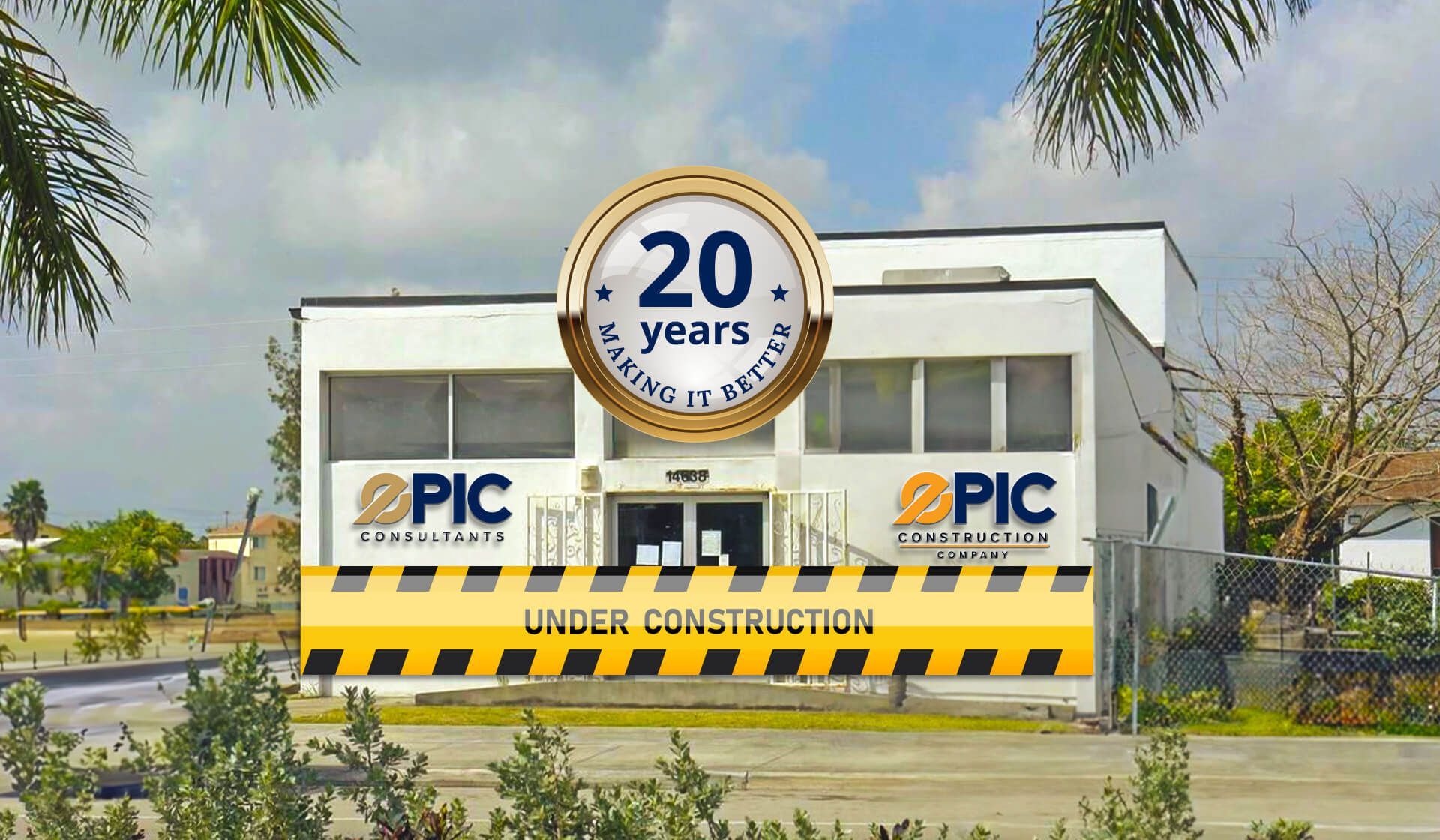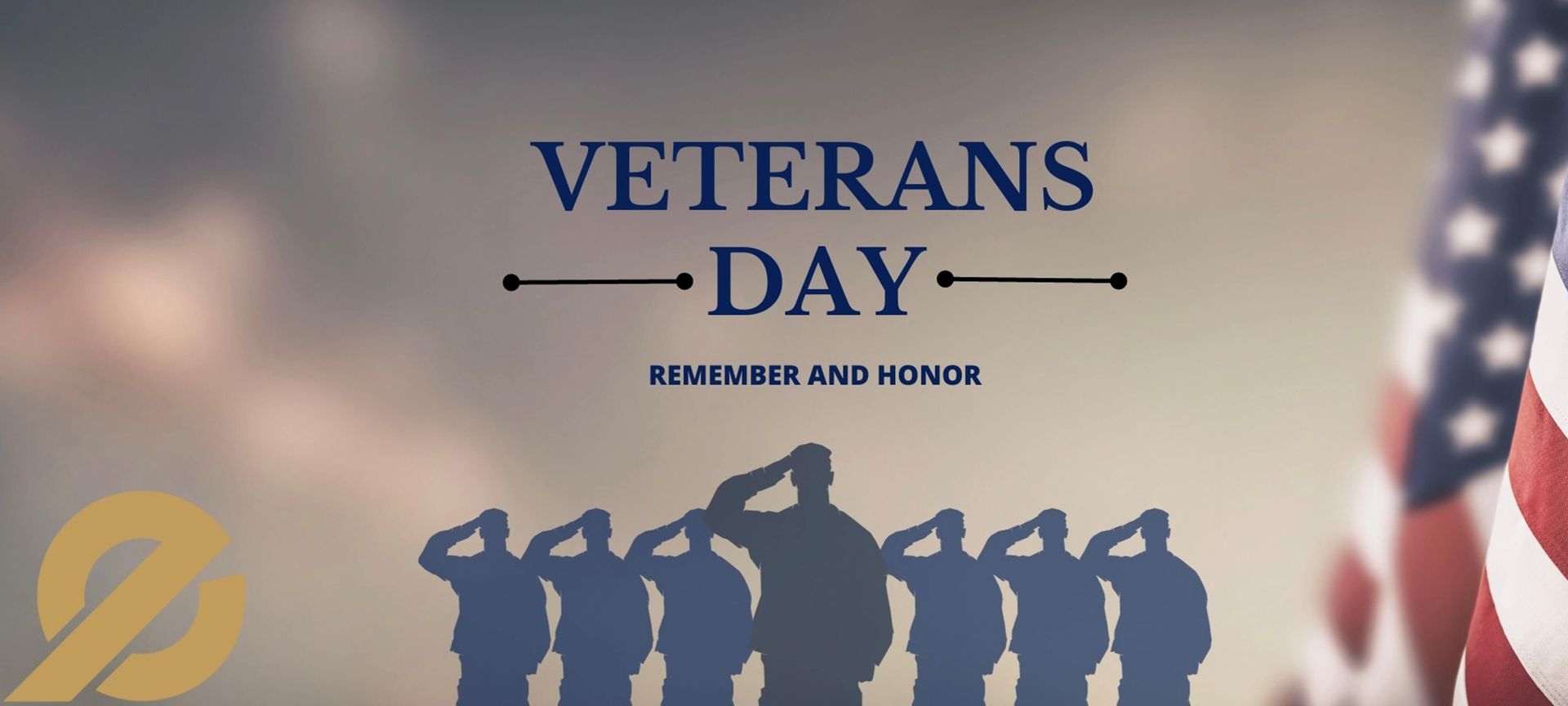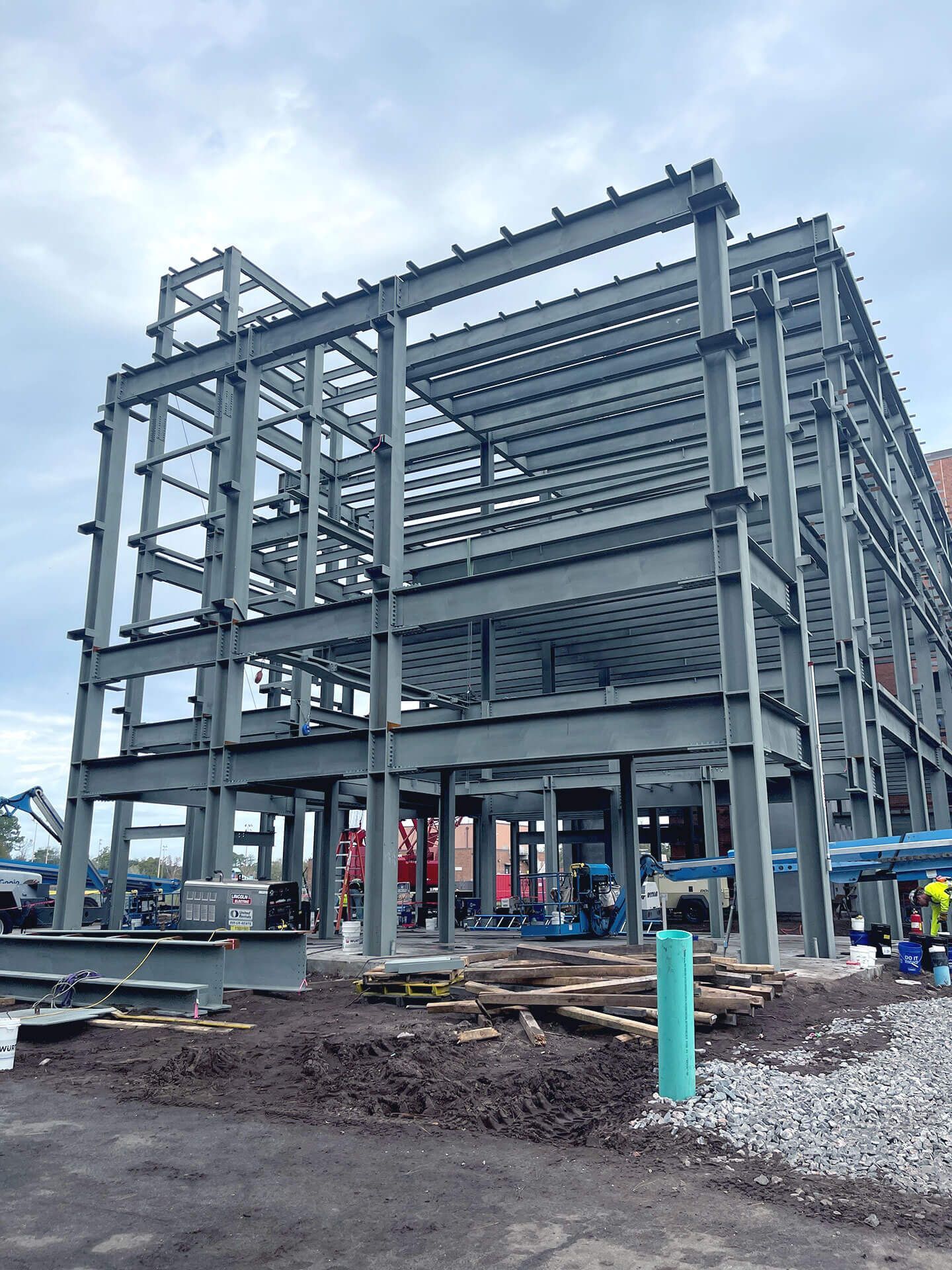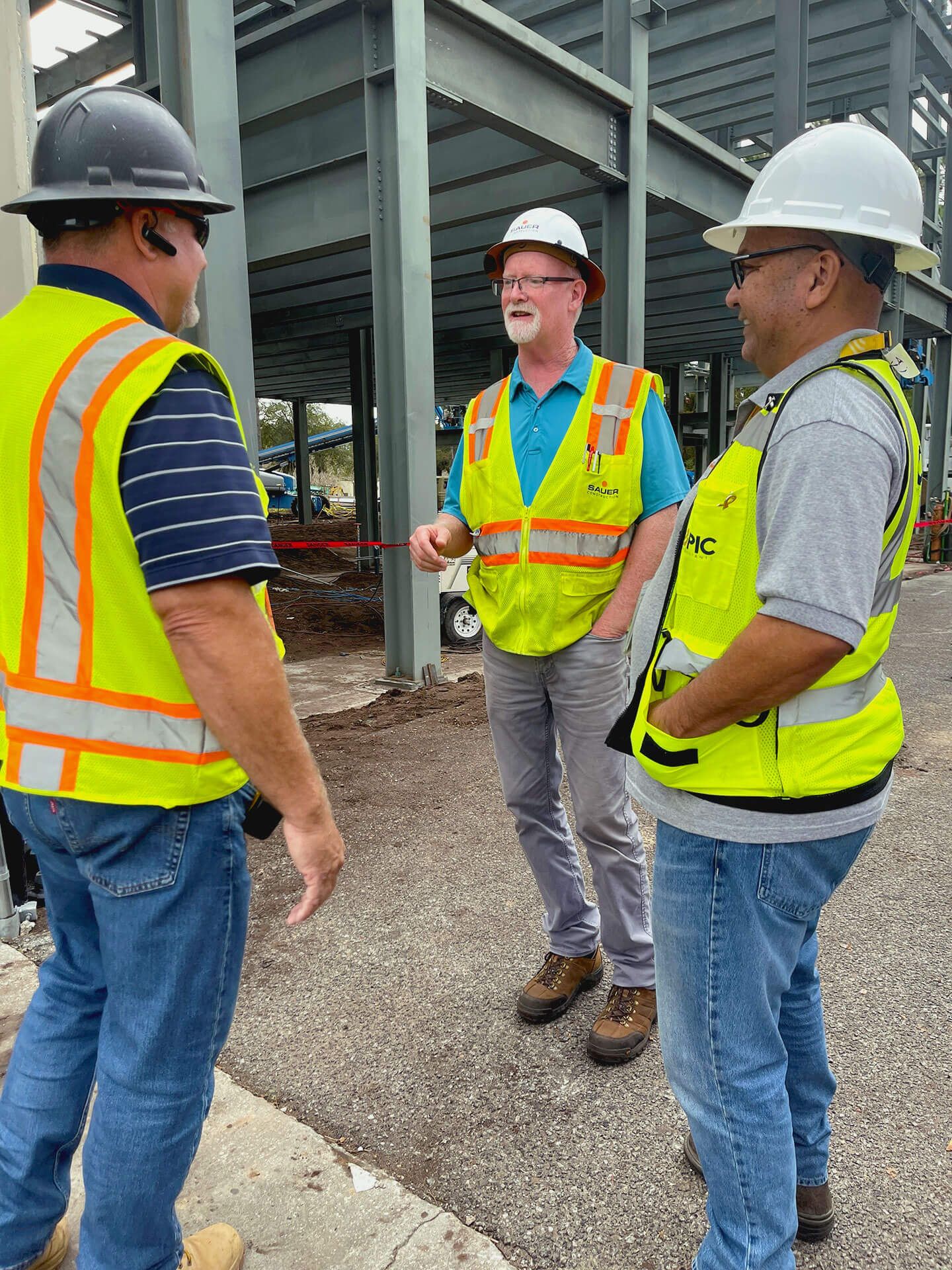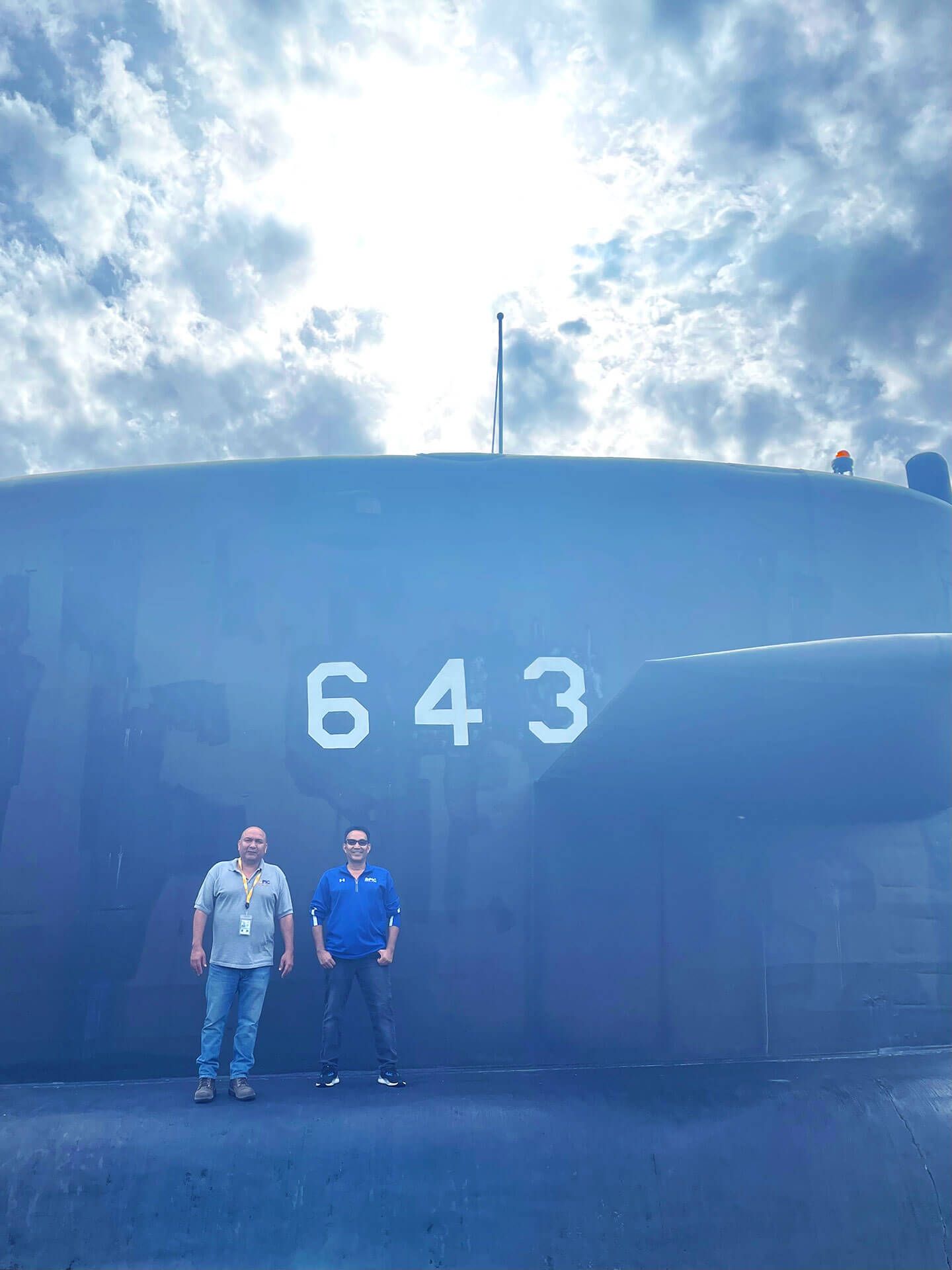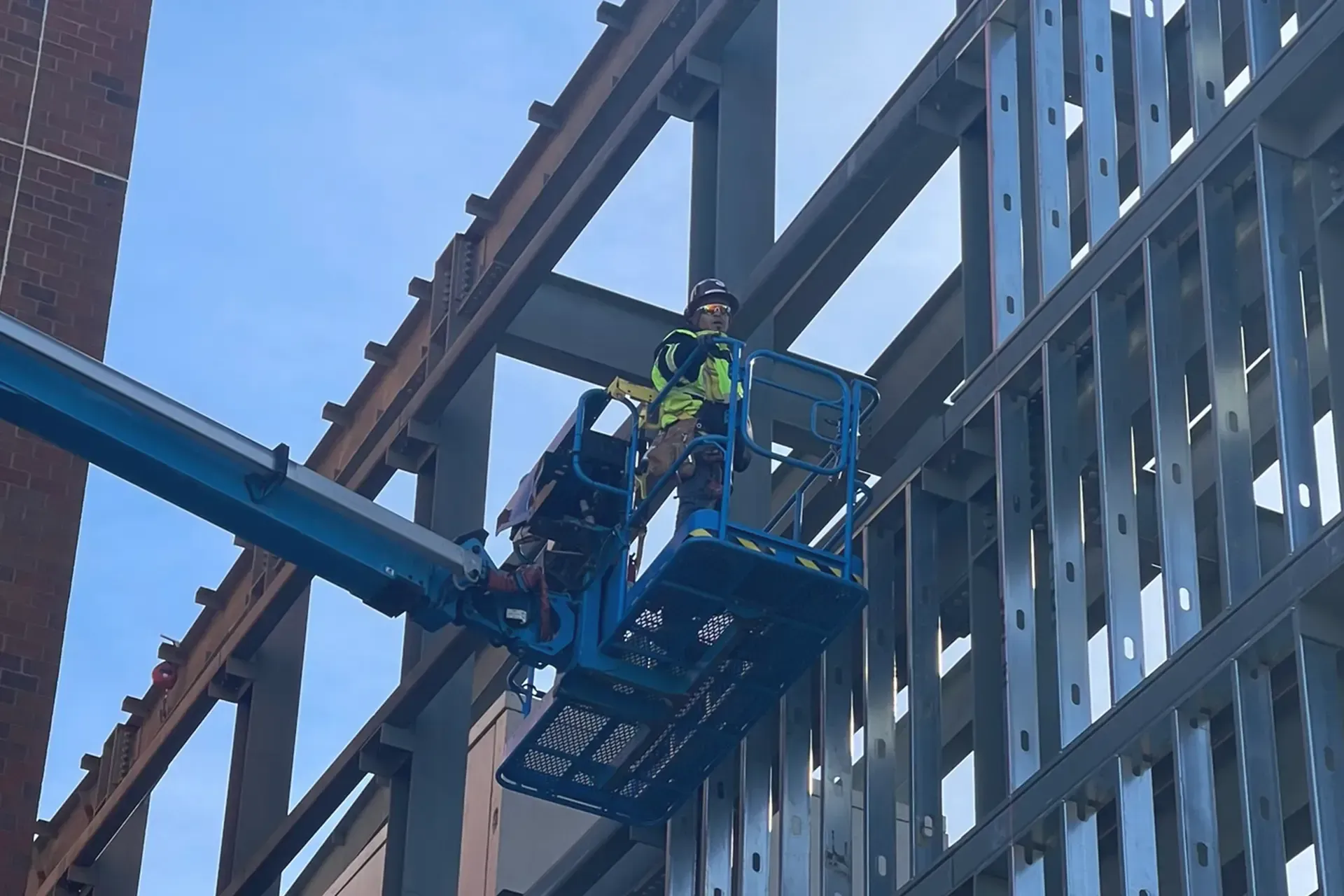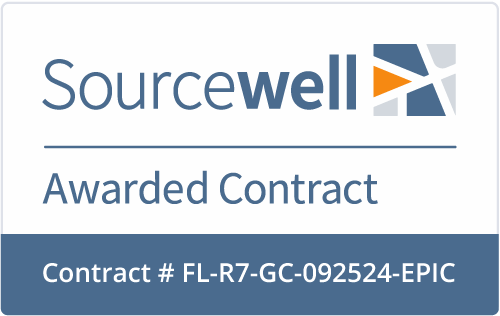By Gubiath Rojas
In the dynamic realm of construction, where timelines are crucial, and collaboration is key, lean construction has emerged as a guiding principle for efficiency and waste reduction. Pull planning, a fundamental aspect of lean construction, has become a pivotal tool in orchestrating complex projects. The overarching goal of the framework is to align the efforts of various stakeholders, eliminate inefficiencies, and enhance overall project delivery. Pull planning involves engaging key project participants in a structured session to, collaboratively and in a reverse fashion, outline the sequence of work leading to a specific milestone.
To illustrate the practical application of these concepts, let's delve into the EPIC Construction Company’s most recent Pull-Planning session for Project P676, the Trident Facility at Kings Bay, Georgia.
Project Overview

Project P676 at the Trident Facility at Kings Bay, Georgia is part of a $37.6 million contract awarded by NAVFAC Southeast to Sauer Construction in December 2022. This project, which involves two additions to Trident Training Facility Kings Bay (TTFKB), initiates a comprehensive overhaul of the base's infrastructure in preparation for the imminent delivery of the Columbia platform later in the decade. "The expansion of the Trident Training Facility Kings Bay will ensure the United States maintains our edge over our strategic competitors for decades to come," said Rear Adm. Thomas “TR” Buchanan, commander, Submarine Group Ten on a Dvidshub post. "Columbia class is our future."
“EPIC has a deep involvement with the military, and we are so proud to be involved in this critical project in support of our country’s strategic capabilities.” Said David Moran, Principal and Head of Construction at EPIC Construction Company. EPIC Construction Company was engaged by Sauer as a subcontractor to perform work that includes facility upgrades; installation of drywall, metal stud framing, structural framing, interior gypsum wallboard, exterior sheathing, duroc tile backer board, insulation in metal stud framed walls, acoustic ceiling systems, acoustic wall and ceiling panels including mounting track, delegated design for gauge metal framing, backing for wall hung items in metal stud walls.
Pull Planning in Action
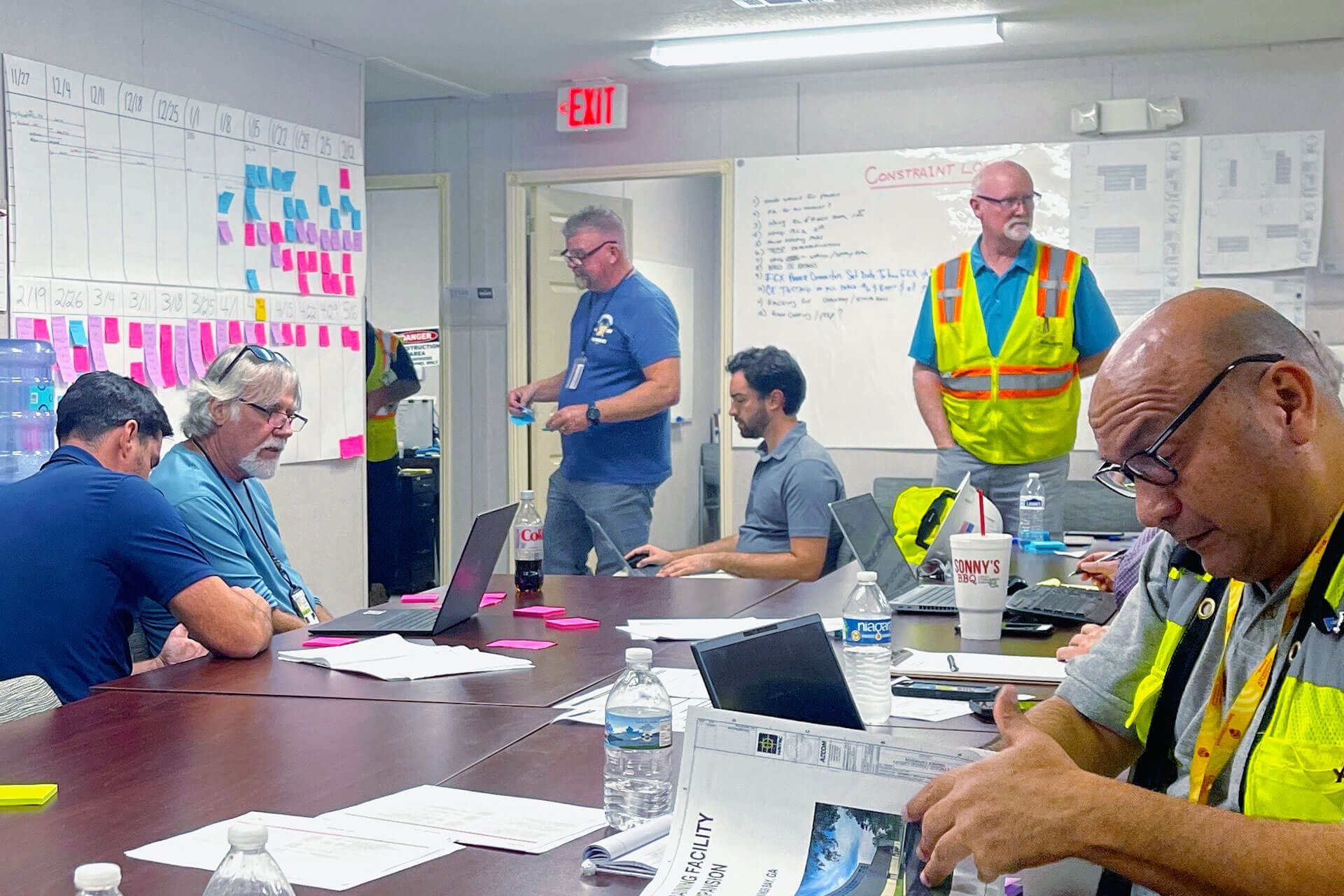
To efficiently schedule and coordinate the activities between the multiple trades that will be involved in this project, Sauer Construction organized its first pull-planning session this past November 20th. EPIC brought its expert team composed of Alfredo Moran, Black Belt and EPIC’s COO, David Moran, Head of Construction, Steve Haygood, Superintendent allocated to the project, and Gubiath Rojas, Black Belt and Senior Consultant specialized in Lean Construction, to facilitate the process.
The initial Pull-Planning session for Project P676 was a two-hour endeavor where EPIC actively participated alongside the Sauer team, as well mechanical and electrical contractors. The session was meticulously structured, emphasizing open communication and active engagement to achieve the first main milestone in the project.
Step 1: Preparation
The success of a pull planning session depends on its meticulous preparation and conduction. To prepare, the organizing team will gather post-it notes on an assortment of colors (one per trade), markers, and project documents and designate a facilitator who is well equipped to neutrally conduct the process. It is also important to confirm representation of all trades and stakeholders, ensuring participants are familiar and committed to the process and the requirements of the project and prepared with detailed activities necessary for the completion of their part on the project.
Step 2: Milestone Visualization
The primary achievement of the Pull-Planning session was the vivid visualization of the work required to reach the first milestone determined by Sauer. Milestones are specific points within the project's life cycle used to measure progress toward the ultimate goal. They are key points that mark a significant event or a branching decision point within the project.
Having a clear visualization of the milestone not only provided clarity to the project team but also set the foundation for a shared understanding of the project's intricacies.
Step 3: Creating the Building Blocks
The building blocks of the planning exercise are the specific activities to be carried out by each of the trades including its duration and handoff. Each trade is designated a color of post-its to be completed with the details of every activity needed by the trade. It is very important that tasks are broken down and considered from the set milestone backwards towards the kick-off.
Step 4: Constraint Identification
Each trade places designated post-it notes on a wall calendar based on the starting date of the activity and its duration. During the activity, the post-it notes more than likely will be moved around once trades start identifying overlapping activities between them. Pull planning encourages the identification of constraints that may hinder the smooth flow of work. Constraints can range from material availability to labor constraints or even dependencies between different trades. By bringing these constraints to light, the team can proactively and collaboratively address potential roadblocks, mitigating delays and disruptions.
Step 5: Commitment and Documentation
The inclusion of all subcontractors in the Pull-Planning session is fundamental. It allows them to understand the broader project context, recognize specific constraints, and appreciate the challenges faced by other trades. In this step, each participant firmly commits to the activities on their post-it notes, forming an individual obligation with all other members of the team. This integrated approach fosters a sense of collective responsibility, promoting collaboration over competition. This completed and agreed upon schedule is documented to be broken down into detailed weekly work plans with clear deadlines and expectations.
Major challenges
As beneficial as the framework is, it does not come without challenges and the skill and experience of the facilitator becomes critical for the success of the session. Some of the major challenges we have identified over the years are:
- Lack of clarity about the project scope and objectives: If stakeholders do not have a clear understanding of the project scope and objectives, it will be difficult to identify and sequence tasks effectively.
- Difficulty in identifying dependencies between tasks: Tasks are often interdependent, meaning that one task cannot be completed until another task is finished. It can be challenging to identify all these dependencies during a pull planning session.
- Unrealistic estimates of task durations: Stakeholders may underestimate the amount of time it will take to complete certain tasks, or not account for potential disruptions external to the control of the team, which can lead to delays in the project schedule.
- Lack of commitment to the plan: Once the pull planning session is complete, it is important for all stakeholders to commit to the plan and follow it through. If stakeholders do not follow the plan, it will be ineffective.
Looking Ahead
The success of the Pull-Planning session is gauged by its ability to produce a clear roadmap to meet the expectations of the General Contractor and the project owner. The collaborative nature of our planning ensured that all stakeholders were on the same page, working towards a common objective. However, the initial pull-planning session is just the beginning. As the project progresses, subsequent sessions will be conducted to adapt to evolving requirements and plan towards following milestones. This iterative approach aligns with the lean construction philosophy, allowing for continuous improvement and adaptation to changing circumstances, and ultimately increasing project’s efficiency and control.
EPIC is specialized in lean systems and lean construction and has expert facilitators to help in your next pull planning session. Follow us for more information.
Share this content
